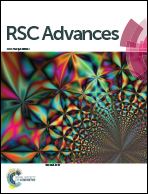Synthesis, characterization, and optical properties of Te, Te/TeO2 and TeO2 nanostructures via a one-pot hydrothermal method
Abstract
Herein, tellurium (Te), tellurium dioxide (TeO2) and Te/TeO2 nanostructures were successfully synthesized via a one-pot hydrothermal route using TeCl4 as a tellurium source. The obtained products were characterized by XRD, SEM, TEM, FT-IR, EDS, and DRS. The effects of different parameters such as temperature, time, surfactant, solvent etc. on the morphology, particle size and product type of the as-synthesized nanostructures were investigated. Based on the XRD results, it was found that the production of Te increased by increasing the reaction temperature. Also, pure Te nanorods were obtained in the presence of ethylene glycol, and when using ammonia pure TeO2 microstructures were formed. Providing favorable conditions for the formation of pure Te and pure TeO2 results in the self-assembly of nanoparticles to form 1-D structures and 3-D nanostructures, respectively, but providing conditions for the formation of a mixture of Te/TeO2 leads to the formation of 0-D nanostructures. These results are significant because the obtained mixture can easily transform to 0-D nanostructures of TeO2 and Te.


 Please wait while we load your content...
Please wait while we load your content...